Meet the creature that eats its own brain!
The sea squirt is one of my favorite sea creatures. When I was a young boy, I first met my first one in a tidal pool in Laguna Beach, California. I remember bending down close to examine it, and like any kid, I gave it a gentle poke. Imagine my surprise when it squirted me right in the eye! The creature is well named, but there’s way more to this amazing animal than its “squirt gun.”
Sea squirts belong to a remarkable group of undersea animals called tunicates. As I explained in my previsous post, “Meet the Amazing Salp,” tunicates are saclike filter-feeders that live on plankton and organic matter they strain from the water they pump through their bodies.
Although one could hardly tell by looking at their squishy bodies, sea squirts are also part of the phylum of chordates—the group of animals that include fish, birds, reptiles, and mammals! This is because in their larval stage, sea squirts have many of the anatomical features of vertebrate animals.
Sea squirts come in an amazing variety of shapes and colors. Superficially, they can look like sponges:
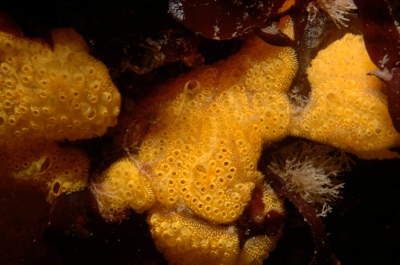
Or they can look like rubbery blobs, when living in colonies:

Or they can even look like grapes (in fact, they are sometimes called sea grapes)

If you want to see some of the best images of sea squirts (and all manner of reef life) on the web, then you should stop by Madang – Ples Bilong Mi. Its a wonderful photo journal by my friend, Jan Messersmith. Jan is an expert diver and photographer, and on his site he shares witty, intelligent commentary and hundreds of beautiful underwater photos from the reefs off of Madang in Papua, New Guinea.
Sea Squirt Images from the Reefs of Papua, New Guinea
Here are just a few of the beautiful sea squirt images you can find at Messersmith’s site, which you can click for greater detail:
Do Sea Squirts Really Eat Their Brains?
After the ability to squirt you in the eye, squirts are probably most famous for “eating their brains.” What happens isn’t quite as drastic as it sounds, but the sea squirt life-cycle is nonetheless “extreme” and fascinating.
Sea squirts are hermaphrodites—they have both male and female reproductive organs. They spawn by releasing eggs and sperm into the water at the same time. After about three days, eggs develop into tadpole-like larvae, just like their relatives the salps. They wiggle and twitch around, which helps disperse them.

Sea Squirt Larva
The free-swimming larvae stage lasts only a short time, since the larvae aren’t capable of feeding. Soon, they settle to the bottom and cement themselves headfirst to the spot where they will spend the rest of their lives. They need to start feeding, so an amazing transformation begins.
The sea squirt larvae begin absorbing all the tadpole-like parts that made them chordates. Where the sea squirt larva once had gills, it develops the intake and exist siphons that will help it bring water and food into its body. It absorbs its twitching tail. It absorbs its primitive eye and its spine-like notocord. Finally, it even absorbs the rudimentary little “brain” (cerebral ganglion) that it used to swim about and find its attachment place.
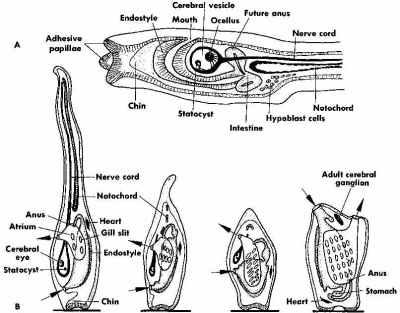
Sea Squirt Life Cycle - UNM
So, yes, in common parlance, the sea squirt “eats its own brain,” such as it is. But since the sea squirt no longer needs its brain to help it swim around or to see, this isn’t a great loss to the creature. It needs this use this now superfluous body material to help develop its digestive, reproductive, and circulatory organs.

Sea Squirt Anatomy - U of MD
How Sea Squirts Eat
A sea squirt is basically a big stomach inside a sack. The sack pumps water in and out of itself, filtering food carried to it by sea currents.
Water comes in one siphon and heads down into the large basket-like pharynx. The pharynx has numerous sieve-like slits for the incoming water to pass through.
Plankton in the incoming water get trapped in a sticky mucus coating the pharynx, and small hair-like cilia help move the plankton to the stomach for digestion. Filtered water and waste products are expelled through the second siphon.
An Extreme Life Cycle
Sea squirts are fascinating animals. They may look primitive but are in fact one of the most highly evolved marine invertebrates. They start out looking like tadpoles and end up looking like beautiful leathery bags and blobs. In the process, they “lose their minds,” so to speak!
In the larval stage, the sea squirt has characteristics that make them part of the same chordate phylum to which all fish, birds, reptiles and mammals belong. In the adult form, the sea squirt is little more than a water pump, pumping water into its vascular system, extracting nutrients, and pumping the water out.
Truly, the sea squirt has one of the most extreme and unusual life cycles of any animal. It is certainly one of the most unusual and strangely beautiful creatures in our oceans.
Be sure to check out this terrific article on sea squirts at Inkling Magazine. It has lots of great science, with a great discussion of how sea squirts propagate themselves:
http://www.inklingmagazine.com/articles/lessons-from-the-sea-squir/
♥♥♥
Comments
52 Responses to “Meet the creature that eats its own brain!”Trackbacks
Check out what others are saying...-
[…] cognitive philosopher Dan Dennett discussing the lowly sea squirt in Consciousness Explained. The sea squirt is a tiny marine creature with just one problem in life – it needs to find a home. So it […]
-
[…] church this morning and our pastor shared with us the life of a tunicate called the sea squirt. The sea squirt is an ocean creature that survives as an adult by pumping water through its body and filtering out plankton and other […]
-
[…] fish, birds, reptiles and mammals, but as they grow, they lose their minds – literally. They digest their own cerebral ganglia, which controls movement, because once they’re sedentary, they no longer need […]
-
What animals do not have brain?…
The Sea Squirt: This little guy is hermaphrodites (has both male and female reproductive organs) so when it reproduces it releases both sperm and eggs into the water where they develop into a tadpole-like larvae while floating in the water for about th…
-
[…] could be more “alien” to us than an octopus, or the zombie-like sea squirt that eats its own […]
-
[…] could be more “alien” to us than an octopus, or the zombie-like sea squirt that eats its own brains? And an octopus is more than just some squidgy alien-esque invertebrate […]
-
[…] below are some beautiful examples of adult sea squirts [4, 5, […]
-
[…] Picture Credit: Good Heart Extreme Science […]
-
[…] of their lives. And through these levels, they do not have brains. The sea squirt, for instance, is an aquatic animal that inhabits oceans. In the course of the early stage of its […]
-
[…] and the sea squirt larvae begins absorbing all their tadpole-like parts and it even absorbs the brain (cerebral) ganglion. (It develops the intake and exit siphons that help it bring water and food into its body where its […]
-
[…] its tail and eye. Finally,(and most fascinatingly) the tiny creature, no longer having need for it, “eats its own brain”. It dissolves the driving force that helped locate the seat it now occupies. Devouring the thing […]
-
[…] For those who haven’t heard, sea squirts come to life as larvae that swim freely around. In that state, however, they are not capable of feeding so they will soon settle to the bottom of the ocean and cement themselves headfirst to a spot where they will spend the rest of their lives. On settling down, the squirt digests its primitive eye, its spine-like notocord, and, finally, its rudimentary little brain! (More about sea squirt.) […]
-
[…] DON'T EAT: Sea squirts, the animal that eats its own brain. […]
-
[…] Meet the creature that eats its own brain! http://www.coralscience.org/main/articles/reef-species-4/tunicates […]
-
[…] Meet the creature that eats its own brain! http://www.coralscience.org/main/articles/reef-species-4/tunicates […]
-
[…] Meet the creature that eats its own brain! http://www.coralscience.org/main/articles/reef-species-4/tunicates […]
-
[…] קישור לכתבה על האיצטלן האוכל את מוחו […]
-
[…] Source: Meet the creature that eats its own brain! | Goodheart’s Extreme Science […]
-
[…] Likewise, stopping our exercising will encourage our brain to cut the energy-hungry connections in our hippocampus and Pre-Frontal Cortex. As the Neuroscientist Daniel Wolpert explained in his TED Talk, when taken to extremes, an animal without the need to move may find it evolutionary advantage to eat its own brain. […]
-
[…] link do Wikipedii, link do ciekawego artykułu oraz link do podcastu Sam Harris, w którym jego gość Anil K. […]
-
[…] once it gets comfortable, it settles down and – because it never needs to move again – it eats its own brain. It spends the rest of its life stuck in one place, day in and day out doing the same […]
-
[…] Sea Squirt eats its own brain, making it the spirit animal of too many humans I […]
-
[…] Nothing speeds up brain atrophy more than being immobilized in the same environment. Look up “Sea Squirt” if you have any doubts! The monotony undermines our dopamine and attentional systems crucial to […]
-
[…] Goodheart, S. (2010, January 27). Meet the creature that eats its own brain! Goodheart’s Extreme Science. https://goodheartextremescience.wordpress.com/2010/01/27/meet-the-creature-that-eats-its-own-brain/ […]
-
[…] A creature that eats its own brain (goodheartextremescience.wordpress.com) […]
-
[…] Posted by Steven Goodheart on January 27, 2010 · 30 Comments […]
-
[…] Read More […]
-
[…] Meet the creature that eats its own brain! Posted by Steven Goodheart on January 27, 2010 · 30 Comments The sea squirt is one of my favorite sea creatures. When I was a young boy, I first met my… Read More […]
-
[…] View Reddit by qznc_bot2 – View Source […]
-
[…] the polychromatic family of sea squirts comes 멍게 (meong ge) or in Japanese 真海鞘 (マボヤ/maboya), less commonly known as sea […]
-
[…] student, Rachel Stewart (confirming that a wide assortment of PhD’s fall victim to the sea squirt theorem). Titled “Dutch Health Insurance Reform: An Evolving Effort to Transform Healthcare”, […]
-
[…] (1) Hjärnfysikbloggen: Belasta skelettet varje dag. (2) ”Meet the creature that eats its own brain” Wikipedia:Sjöpungar Bowman, Katy. (2016). […]
-
[…] and the sea squirt larvae begins absorbing all their tadpole-like parts and it even absorbs the brain ganglion. .So it is true that the sea squirt devours its own brain but luckily this occurs after the […]
-
[…] and the sea squirt larvae begins absorbing all their tadpole-like parts and it even absorbs the brain ganglion. .So it is true that the sea squirt devours its own brain but luckily this occurs after the […]
-
[…] and the sea squirt larvae begins absorbing all their tadpole-like parts and it even absorbs the brain ganglion. .So it is true that the sea squirt devours its own brain but luckily this occurs after the […]
-
[…] and the sea squirt larvae begins absorbing all their tadpole-like parts and it even absorbs the brain ganglion. .So it is true that the sea squirt devours its own brain but luckily this occurs after the […]
-
[…] Meet the creature that eats its own brain! http://www.coralscience.org/main/articles/reef-species-4/tunicates […]
-
[…] to … make its home for life”. On finding one, the sea squirt no longer needs its brain and eats it. Humanity is unlikely to adopt such culinary habits but there is a worrying metaphorical parallel. […]
-
[…] per la vita”. Dopo averne trovato uno, l’ascidia non ha più bisogno del suo cervello e mangialo. È improbabile che l’umanità adotti mai tali abitudini culinarie, ma c’è una […]
-
[…] untuk kehidupan”. Ketika muncrat laut menemukannya, ia tidak lagi membutuhkan otaknya dan makan itu. Umat u200bu200bmanusia tidak mungkin mengadopsi kebiasaan kuliner seperti itu, tetapi ada […]
-
[…] to … make its home for life”. On finding one, the sea squirt no longer needs its brain and eats it. Humanity is unlikely to adopt such culinary habits but there is a worrying metaphorical parallel. […]
-
[…] to … make its home for life”. On finding one, the sea squirt no longer needs its brain and eats it. Humanity is unlikely to adopt such culinary habits but there is a worrying metaphorical parallel. […]
-
[…] to … make its home for life”. On finding one, the sea squirt no longer needs its brain and eats it. Humanity is unlikely to adopt such culinary habits but there is a worrying metaphorical parallel. […]
-
[…] Meet the creature that eats its own brain! http://www.coralscience.org/main/articles/reef-species-4/tunicates […]
-
[…] l’ancoraggio elimina il bisogno di muoversi, il cervello diventa superfluo e viene pertanto riassorbito nel corso della metamorfosi della larva nella forma adulta. Al termine, l’animale adulto è […]
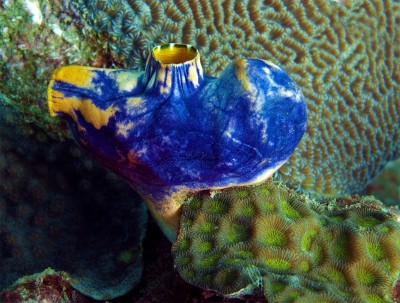

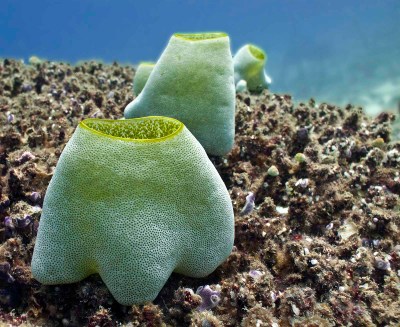
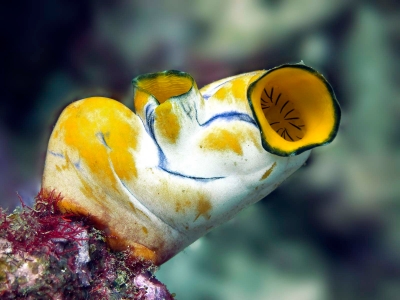
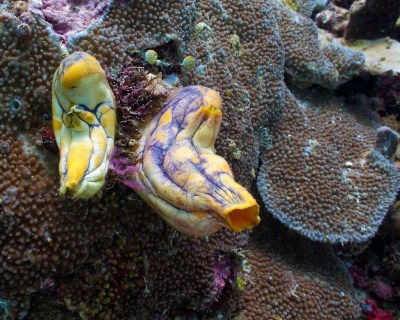


That is really, really cool. Never knew that!
I added you to my blogroll, by the way. I may have to start a new list of science blogs I follow.
These creatures have sadly been cited by opponents of academic tenure. They have a rudimentary brain whose sole function is to find a place to latch on and feed. After that, it is absorbed and disappears.
I have tenure and love it, but there are daily frustrations dealing with those sea squirts.
of course these organisms as i see and observe them are similar to sponges in many factor like environment, mode of nutrition, appearance, etc.